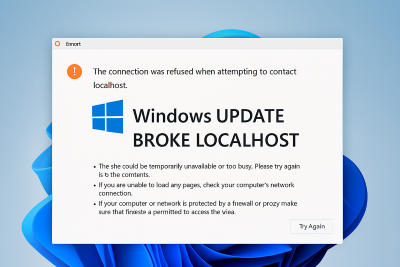Microsoft’s October cumulative update for Windows 11 — KB5066835 — is causing major headaches for developers, sysadmins, and power users. The update, released as part of Patch Tuesday, has broken localhost functionality, triggered install errors, and disrupted File Explorer previews, forcing many users to roll back.

What’s Going Wrong
Users began reporting issues shortly after installing KB5066835:
- Localhost services fail to bind or respond, breaking dev environments and internal testing setups.
- File Explorer preview pane crashes or fails to load content, especially for PDFs and media files.
- Install errors and silent failures during update application, with some systems freezing mid-process.
Microsoft has not yet acknowledged the full scope of the bug, but forums and admin channels are flooded with rollback instructions and mitigation tips.
Real-World Impact
For developers running local web servers, the update essentially bricks their workflow. One admin shared, “I was testing a Node.js app on my ThinkPad, and suddenly localhost was unreachable. Thought it was my firewall—turns out it was KB5066835.”
In enterprise setups, the preview pane glitch is more than cosmetic. It affects document workflows, especially in finance and legal teams that rely on quick previews for PDFs and spreadsheets.
Workarounds and Rollback Tips
Until Microsoft issues a fix, here’s what admins are doing:
- Uninstall KB5066835 via Control Panel → Installed Updates.
- Use System Restore if the update caused boot or install failures.
- Temporarily disable preview pane in File Explorer to avoid crashes.
- For localhost issues, verify that loopback adapters and firewall rules weren’t reset post-update.
Broader Context
This isn’t the first time a cumulative update has disrupted core functionality. But breaking localhost — a foundational tool for developers — is a rare misstep. Combined with recent Exchange and M365 outages, October has been a rough month for Microsoft’s reliability scorecard.
If you’re running dev environments on Windows 11, this update is a cautionary tale. Always snapshot your system or test updates in a VM before rolling them out. And if you’re in a hybrid setup with legacy endpoints, keep an eye on how cumulative updates affect core services like DNS, loopback, and preview handlers.
Have you rolled back KB5066835 yet? Did it break anything else in your setup? Share your experience — the more we document, the faster we can pressure Microsoft for a fix.
